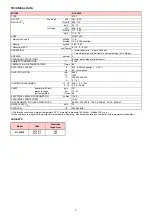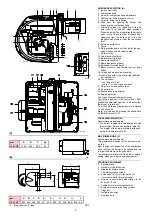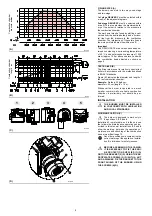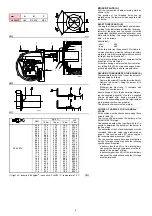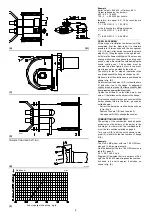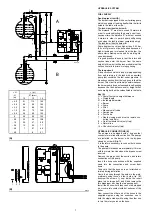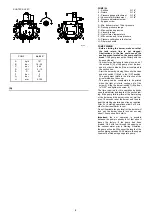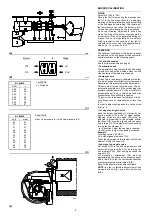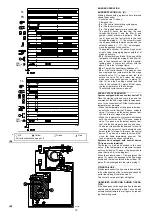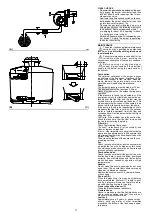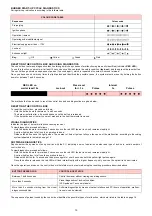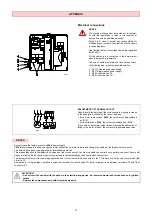
11
FINAL CHECKS
• Obscure the photocell and switch on the con-
trol devices: the burner should start and then
lock-out about 5 s after opening of the 1st noz-
zle operation valve.
• Illuminate the photocell and switch on the con-
trol devices: the burner should start and then
go into lock-out after about 10 s.
• Obscure the photocell while the burner is in
2nd stage operation, the following must occur
in sequence: flame extinguished within 1 s,
pre-purging for about 20 s, sparking for about
5 s, burner goes into lock-out.
• Switch off control device TL followed by con-
trol device TS while the burner is operating:
the burner should stop.
MAINTENANCE
The burner requires periodic maintenance
carried out by a qualified and authorised
technician
in conformity with legislation and
local standards
.
Periodic maintenance is essential for the
reliability of the burner, avoiding the
excessive consumption of fuel and consequent
pollution.
Before carrying out any cleaning or
control, always switch off the electrical
supply to the burner, using the main switch of
the system.
Combustion
The optimum calibration of the burner requires
an analysis of the flue gases. Significant differ-
ences with respect to the previous measure-
ments indicate the points where more care
should be exercised during maintenance.
Pump
The delivery pressure must be stable at 12 bar.
The depression must be less than 0.45 bar.
Unusual noise must not be evident during pump
operation.
If the pressure is found to be unstable or if the
pump runs noisily, the flexible hose must be de-
tached from the line filter and the fuel must be
sucked from a tank located near the burner. This
measure permits the cause of the anomaly to be
traced to either the suction piping or the pump.
If the pump is found to be responsible, check to
make sure that the filter is not dirty. The vacuum
meter is installed upstream from the filter and
consequently will not indicate whether the filter is
clogged or not.
Contrarily, if the problem lies in the suction line,
check to make sure that the filter is clean and
that air is not entering the piping.
Filters
(A)
Check the following filter boxes:
• on line 1) • in the pump 2) • at the nozzle 3), and
clean or replace as required.
If rust or other impurities are observed inside the
pump, use a separate pump to lift any water and
other impurities that may have deposited on the
bottom of the tank.
Then clean the insides of the pump and the cov-
er sealing surface.
Fan
Check to make sure that no dust has accumulat-
ed inside the fan or on its blades, as this condi-
tion will cause a reduction in the air flow rate and
provoke polluting combustion.
Combustion head
Check to make sure that all the parts of the com-
bustion head are in good condition, positioned
correctly, free of all impurities, and that no defor-
mation has been caused by operation at high
temperatures.
Nozzles
Do not clean the nozzle openings; do not even
open them. The nozzle filters however may be
cleaned or replaced as required.
Replace the nozzles every 2-3 years or whenev-
er necessary.
Photocell
(B)
Clean the glass cover from any dust that may
have accumulated. Photocell 1) is held in posi-
tion by a pressure fit and can therefore be re-
moved by pulling it outward forcefully.
Flame inspection window (C)
Clean the glass whenever necessary.
Flexible hoses
Check to make sure that the flexible hoses are
still in good condition and that they are not
crushed or otherwise deformed.
Fuel tank
Approximately every 5 years, or whenever nec-
essary, suck any water or other impurities
present on the bottom of the tank using a sepa-
rate pump.
(A)
(B)
(C)
D482
D484
D483
!
!
!




